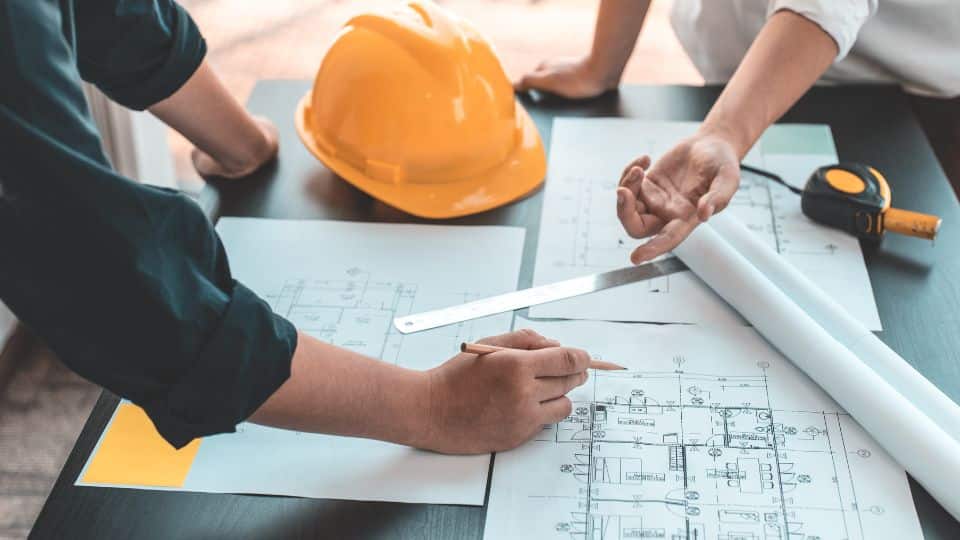Architect Advice on Utilizing Tight Urban Spaces
Architect Advice on Utilizing Tight Urban Spaces
Blog Article
Comprehending the Diverse Job Paths Available for Aspiring Architect
As an ambitious Architect, you have a world of job paths waiting for you. Whether you're drawn to standard style or the subtleties of lasting layout, there's a niche that aligns with your rate of interests.
Typical Architecture: Designing Frameworks and structures
Typical architecture focuses on developing buildings and frameworks that mix capability with visual allure. As you discover this field, you'll appreciate the elaborate balance between form and function. You'll discover to draw motivation from historical styles, integrating aspects like balance, materials, and craftsmanship. Your designs can reflect cultural heritage, showcasing local traditions while meeting contemporary demands.
You'll create abilities in composing, model-making, and site evaluation, permitting you to picture and interact your ideas efficiently. Engaging with customers, you'll require to comprehend their vision and translate it into feasible layouts.
Moreover, building codes and sustainability practices are vital in your work, guaranteeing your structures are ecologically friendly and secure. As you grow in your profession, you'll find possibilities in household, industrial, or even repair jobs, each offering distinct challenges. Embracing typical style paves the means for a satisfying career that pays tribute to the past while forming the future.
Urban Planning: Shaping Areas and Public Spaces
As a hopeful Architect, you can play a crucial function as a city coordinator, transforming how areas interact and operate. By utilizing area interaction approaches, you'll guarantee that homeowners have a voice in shaping their setting. Plus, integrating lasting style concepts will assist develop spaces that not just fulfill today's requirements yet likewise safeguard the future.
Function of Urban Planners
While many may think about architects as the single visionaries behind buildings, metropolitan organizers play a crucial function fit the more comprehensive landscape of communities and public areas. They assess land use, zoning legislations, and area requires to develop sustainable environments that enhance lifestyle. By collaborating with numerous stakeholders, you'll help create parks, transport systems, and suburbs that advertise social interaction and ease of access. Urban coordinators likewise concentrate on environmental considerations, guaranteeing that advancements integrate green rooms and assistance biodiversity. Your competence in spatial style and neighborhood characteristics permits you to envision future development while maintaining social heritage. In this crucial function, you'll directly influence how individuals experience their environments, making every project an opportunity for favorable adjustment.
Area Involvement Methods
Efficient neighborhood involvement strategies are essential for metropolitan organizers to assure that the voices of homeowners are listened to and valued in the preparation process. To promote purposeful discussion, you need to focus on open discussion forums and workshops where community members can express their concepts and concerns. By proactively paying attention and incorporating responses, you'll produce areas that show the neighborhood's requirements, eventually leading to more successful and sustainable metropolitan settings.
Lasting Design Principles
When making urban areas, integrating sustainable design concepts is important for producing atmospheres that flourish both ecologically and socially. You need to begin by concentrating on energy efficiency, making use of products that reduce waste and promote recycling. Take into consideration incorporating eco-friendly spaces, like gardens and parks, to enhance biodiversity and boost air high quality. Promoting walkability and public transportation can lessen reliance on automobiles, fostering a much healthier community.
Creating with water conservation in mind is additionally essential-- consider rainfall yards and permeable surface areas to handle stormwater. Entailing neighborhood members throughout the planning procedure guarantees that the areas you create fulfill their needs and motivate social communication. By accepting these concepts, you'll contribute to vivid, sustainable urban landscapes that profit every person.

Landscape Design: Creating Sustainable Outdoor Settings
As you check out landscape design, you'll discover crucial style principles that develop attractive and practical outside rooms. Lasting methods play an important function in guaranteeing these settings prosper while lessening environmental effect. And also, you'll discover a selection of occupation opportunities that permit you to make a real distinction in just how people engage with nature.
Design Principles in Landscape
Understanding design principles in landscape style is important for developing lasting outside atmospheres that balance with nature. You'll need to contemplate elements like range, percentage, and balance to assure your layouts really feel cohesive and welcoming. In addition, pay focus to seasonal adjustments, creating with materials that complement the environments year-round.
Lasting Practices Introduction
Sustainable techniques in landscape architecture not just concentrate on aesthetic appeals yet also prioritize eco-friendly health and resource conservation. You can make rooms that promote dirt wellness, such as making use of organic materials and practicing permaculture principles. Ultimately, these methods ensure your styles find this profit both individuals and the setting for years to come.
Occupation Opportunities Expedition
With a strong foundation in sustainable practices, landscape architecture provides a selection of career paths that allow you to make a significant effect on the setting. You could function as a landscape developer, developing cosmetically pleasing and useful exterior spaces, or specialize in ecological restoration, helping to revive broken communities. Urban planners frequently collaborate with landscape architects to develop green rooms in city settings, boosting city livability. If you're enthusiastic about education and learning, take into consideration coming to be a landscape design educator, inspiring future generations. Additionally, you may work with nonprofits concentrated on ecological sustainability or take part in research study to innovate brand-new techniques. Each path not only forms beautiful settings however also cultivates a much healthier earth for future generations.
Sustainable Design: Concentrating On Eco-Friendly Practices
As you explore your occupation in architecture, accepting environmentally friendly practices can establish you apart in a competitive field. Lasting design focuses on creating structures that minimize environmental influence while enhancing resident wellness. By including renewable materials, energy-efficient systems, and lasting structure techniques, you'll add to a greener future.
Beginning by gaining expertise of eco-friendly qualifications like LEED or BREEAM, which can boost your qualifications. Consider exactly how all-natural light, air flow, and thermal effectiveness can maximize layout. Team up with engineers and environmental professionals to introduce remedies that reduce waste and save resources.
Do not forget the significance of area involvement-- appealing regional stakeholders can motivate layouts that harmonize with the environment. As clients increasingly prioritize sustainability, your knowledge in eco-friendly practices will not only attract projects yet also satisfy your passion for responsible architecture. Embrace this vital facet of the career, and see your job prosper.
Historical Conservation: Protecting and Restoring Social Heritage
While you start on your building journey, think about the crucial duty of historical preservation in maintaining our social heritage. This area concentrates on the defense and repair of considerable buildings, websites, and frameworks that tell the stories of our past. By involving in historical preservation, you'll help safeguard the architectural heritage that forms community identification.
As a historical preservation Architect, you'll evaluate historic importance and analyze the problem of frameworks. why not try this out You'll work closely with chroniclers and guardians to guarantee genuine restoration methods are utilized. This occupation path enables you to blend imagination with research, allowing you to develop solutions that appreciate initial materials and craftsmanship.
Your work not just adds to sustainability by recycling existing structures yet likewise cultivates a sense of satisfaction within communities. Accepting this course will certainly assist you become a guardian of history, protecting the tales and appearances that enrich our lives.
Interior Architecture: Enhancing Indoor Spaces
Historic preservation and interior design both share a commitment to boosting the constructed atmosphere, yet they concentrate on different aspects. While historic conservation emphasizes maintaining a structure's historical and social worth, interior architecture nos in on enhancing interior rooms for functionality and looks.
As an ambitious Architect, you'll locate that indoor style enables you to mix creative thinking with technological abilities. You'll make areas that not just look excellent yet additionally advertise convenience and efficiency. This field entails understanding how light, shade, and materials engage within a room, influencing state of mind and use.
You'll function on different projects, from domestic homes to industrial offices, guaranteeing that each environment satisfies the requirements of its owners. By focusing on customer experience, you can change interiors right into motivating and useful areas, making a considerable effect on how individuals engage with their surroundings. Embrace the possibility to boost interior settings and shape the way individuals function and live.
Industrial Layout: Merging Functionality With Looks
Industrial design plays a necessary role in developing items that seamlessly blend appearances with performance, making sure that what you make use of daily is not only visually enticing but additionally practical. As a hopeful Architect, you might engage on your own in this field, concentrating on creating whatever from furniture to customer electronics. Your job involves recognizing customer requirements, materials, and producing processes, enabling you to create innovative services that improve day-to-day experiences.
In industrial style, you'll commonly collaborate with marketers, suppliers, and engineers, making certain that your layouts are not only beautiful but also viable. This job path supplies a dynamic setting where creative thinking satisfies practicality, making it a gratifying selection for architects interested in forming the products of tomorrow.
Frequently Asked Inquiries
What Educational Accreditations Do I Need to Come To Be an Engineer?
To end up being an architect, you'll require an expert degree in style, usually a Bachelor's or Master's. Furthermore, you'll have to finish an internship and pass the Architect Registration Examination to exercise legitimately.
Are There Qualification Demands for Different Building Career Paths?
Yes, there're qualification requirements for numerous architectural paths. Architect. You'll require to pass examinations, complete internships, and often pursue specialized training, depending upon your chosen focus, like landscape architecture, city design, or historic conservation
What Software Program Abilities Are Vital for Architects Today?

How Can I Gain Practical Experience While Researching Design?
You can gain functional experience by interning at architectural companies, getting involved in style competitors, volunteering for community projects, or working together with classmates on real-world assignments. These opportunities boost your skills and construct beneficial connections in the industry.
What Work Opportunities Exist Outside Standard Style Firms?
You can check out different task possibilities outside standard architecture firms, like city preparation, interior style, landscape style, building monitoring, property development, and even roles in sustainability consulting. Each offers special obstacles and rewards.
Whether you're drawn to traditional style or the subtleties of lasting layout, there's a particular niche that lines up with your passions.When designing metropolitan areas, incorporating sustainable design principles is important for creating settings that grow both environmentally and socially.As you check out landscape basics architecture, you'll discover important layout concepts that create beautiful and functional exterior rooms.Understanding design concepts in landscape architecture is important for developing lasting outdoor settings that integrate with nature.In commercial layout, you'll usually team up with engineers, producers, and online marketers, ensuring that your designs are not just lovely however also practical.
Report this page